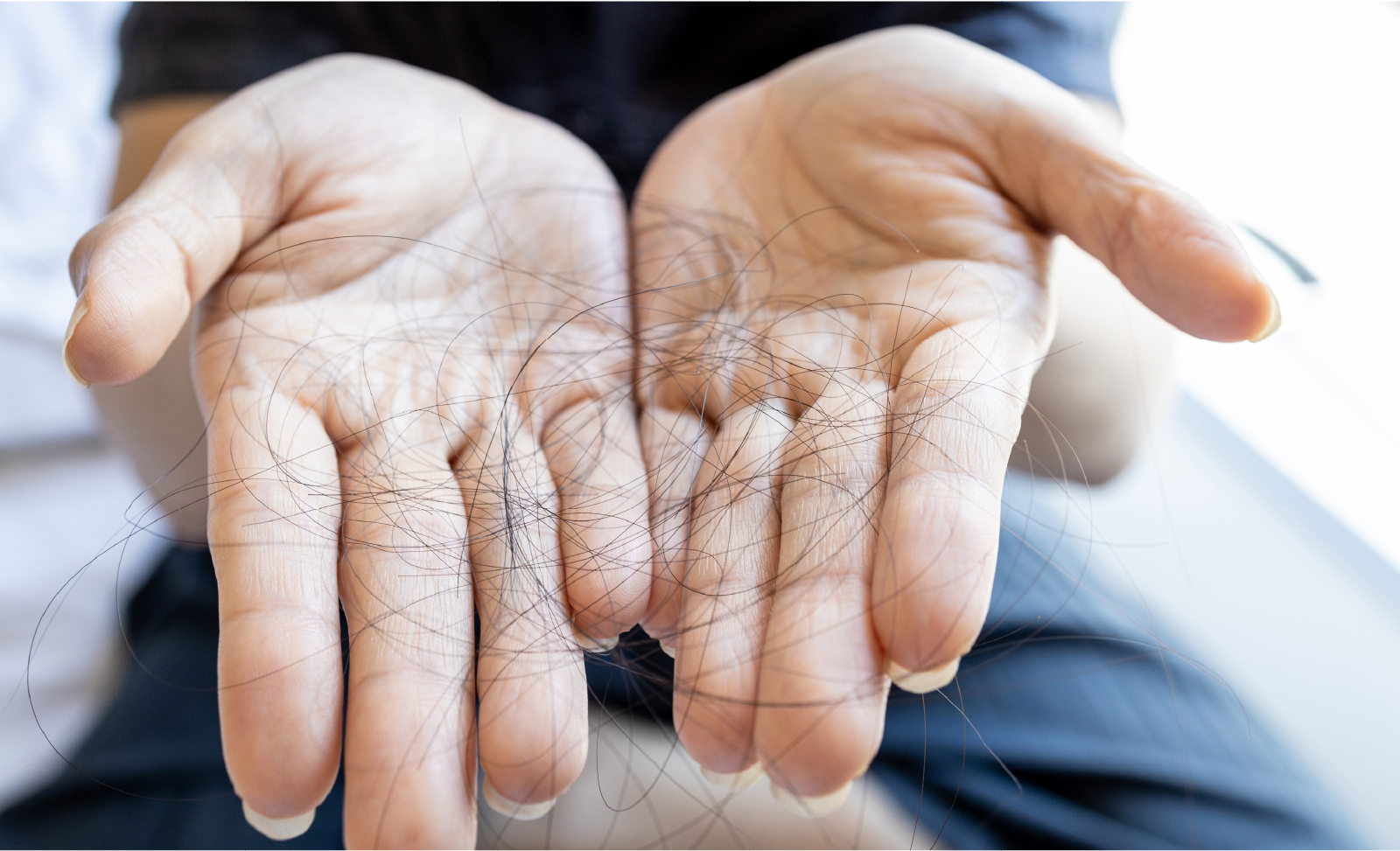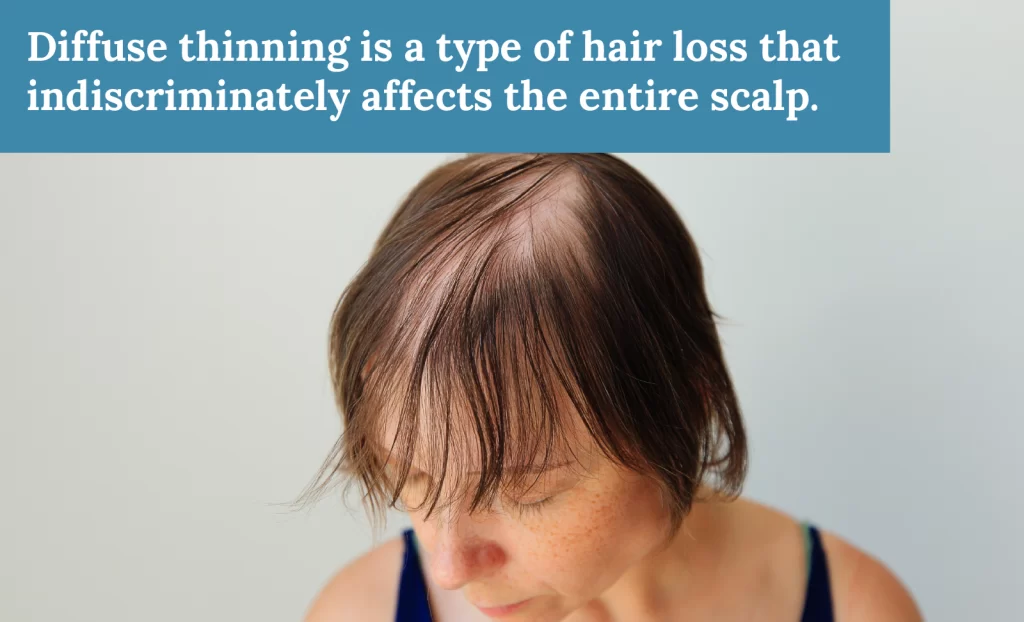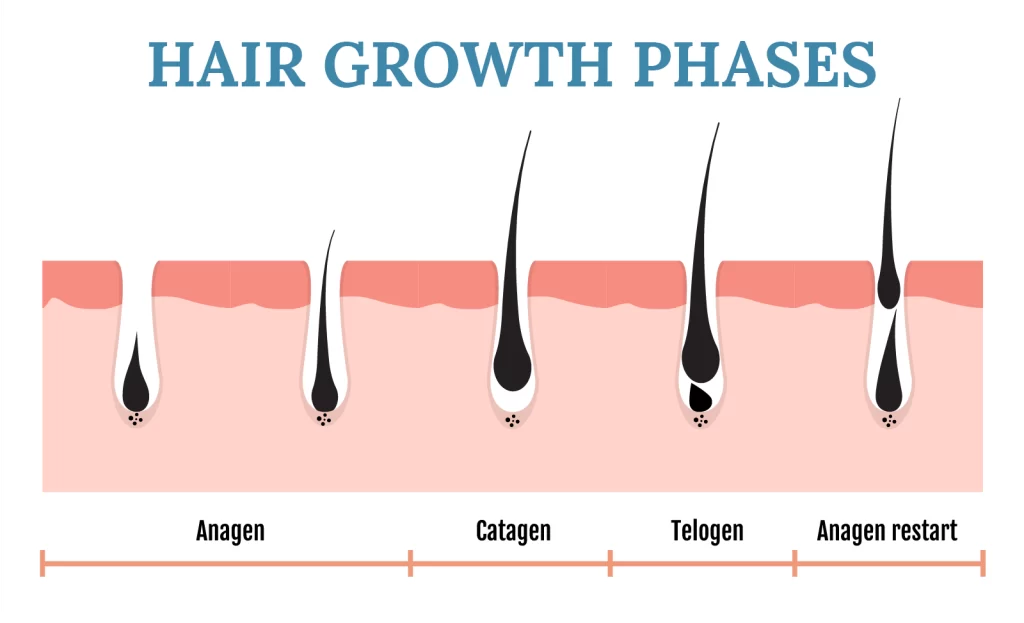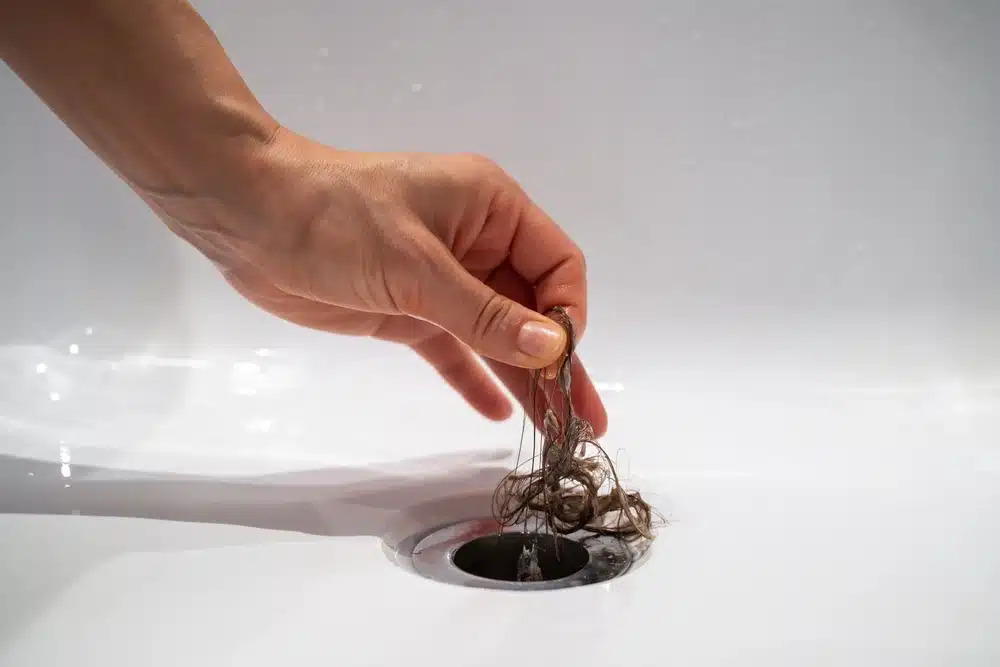When you picture hair loss, you likely picture the symptoms of a receding hairline and a thinning crown. These signs are particularly common in men experiencing androgenetic alopecia, which affects around 50% of men by the time they reach 50 years. [1]
Of course, hair loss doesn’t always look the same, and that is proven by diffuse hair thinning. Do you want to learn more about diffuse thinning, including the most common causes, symptoms, and treatment options? Perhaps you’ve experienced diffuse thinning on your own scalp and want to learn more about how to reverse it. If so, you’re in the right place!
What is Diffuse Thinning?
Diffuse thinning is a type of hair loss that indiscriminately affects the entire scalp. Rather than experiencing a bald patch at the crown, more thinning at the hairline, or small bald patches, diffuse thinning impacts the scalp in a more uniform manner, causing general thinness and a lower hair density overall.
The Signs of Diffuse Hair Loss
Understanding the signs of diffuse hair loss is important, as it means finding the best treatment options for your needs.
- A More Visible Scalp
- Excessive Hair Shedding
- Thinner Feeling Hair
- A Less-Defined Hairline
You might find more hair on your pillow, or perhaps more strands clogging up your shower drain than usual. Sometimes, it takes a while to spot the signs of diffuse hair loss, as it can come on slowly. Other times, it can happen fast, and you may be startled and wondering why you’re losing your hair so quickly.
The Most Common Causes of Diffuse Thinning Hair
In order to treat diffuse thinning, you must understand the root cause, which includes the following.
Telogen Effluvium
Telogen effluvium is a common cause of hair loss that causes rapid shedding, leading to thinning hair all over the scalp, also known as diffuse thinning. This form of hair loss disrupts the hair growth cycle, which includes the anagen (growth) phase, the catagen (resting) phase, and the telogen (shedding) phase. Telogen effluvium is triggered by a specific stressor, which causes many of the hairs in the anagen phase to go into the telogen phase of the hair growth cycle, causing excess shedding.
Telogen effluvium can be caused by a range of triggers, including:
- High Levels of Stress
- Major Surgery
- Crash Diets
- Hyperthyroidism
- Hypothyroidism
- Childbirth
- A Fever
- Rapid Weight Loss
- Nutritional Deficiencies
- Serious Injections
- Certain Medications
The good news is that telogen effluvium is reversible. Most people find their hair starts growing back within several months. However, it is essential to address the cause of telogen effluvium, whether that’s getting enough nutrients in your diet or managing stress levels.
It’s important to note, however, that there is such thing as chronic telogen effluvium, which is when the problem occurs for more than half a year, often without a clear cause. It can be particularly hard to deal with as this long-term hair falling may cause even more stress, exacerbating the issue further.
Want to track your hair loss and growth? Download our hair track app.
Alopecia Areata Incognita/Diffuse Alopecia Areata
Alopecia areata is an autoimmune condition that causes hair loss. There is a rare form of this hair loss called diffuse alopecia areata (or alopecia areata incognita), which affects the entirety of the scalp, causing rapid thinning. It’s usually quite extensive and comes on suddenly. Treatments for this include topical steroid creams, immunotherapy, and minoxidil.
Nutritional Deficiencies
Certain nutritional deficiencies can cause diffuse hair thinning, including iron deficiencies, vitamin D deficiencies, protein deficiencies, and zinc deficiencies.
A doctor can perform a blood test to determine if you are deficient in anything. If you are, the treatment options are usually quite simple – taking a supplement or changing your diet. However, keep in mind there are sometimes underlying causes of deficiencies that will require treatment in itself.
Thyroid Disorders
Thyroid disorders, such as hyperthyroidism and hypothyroidism, can also cause diffuse thinning. This is because the problems disrupt the hair growth cycle and harm the hair follicles, causing the shedding phase to occur.
To diagnose a thyroid imbalance, it’s crucial to speak to your doctor – other common symptoms include fatigue, weight gain, intolerance to the cold, muscle aches, depression, and depression. A blood test can see whether you have a thyroid imbalance, and from there, you can seek medication to treat it. By treating this underlying cause, your diffuse hair thinning should reverse.
Pregnancy and Childbirth
The hormonal changes a person goes through when pregnant and after giving birth can have a significant impact on the hair, often causing diffuse thinning. The good news is this is usually temporary, with many new mothers just having to wait a few months for hormones to stabilise once more before their hair grows back in full.
What About Androgenetic Alopecia?
Androgenetic alopecia is also known as female pattern hair loss and male pattern hair loss. It is the most common cause of hair loss and affects both men and women, although it is more prevalent in men.
Diffuse thinning is typically not caused by pattern hair loss, as this usually causes baldness and thinning in very specific areas. In men, this usually means the hairline and the crown; in women, androgenetic alopecia typically targets the top and crown of the scalp, leading to a widened parting.
Treatments for Diffuse Hair Thinning
Have you experienced diffuse hair thinning? It’s never nice to notice that your scalp hair is not as thick and dense as it once was, and you will likely want to find the best hair loss treatment as soon as possible.
Addressing the Underlying Cause
The best treatment for diffuse hair thinning is always getting to the root of the cause. As you can see above, several potential causes exist, from hormonal imbalances during pregnancy to stress-induced telogen effluvium. By understanding this trigger, you can then make the necessary changes to reverse the hair falling out. For example, if you learn you are deficient in zinc, you can begin taking a zinc supplement. If you find out you have a thyroid disorder, you can receive a prescription medication to treat that disorder, effectively reducing your symptoms, including hair loss.
Hair Loss Medications
Two of the most commonly used hair loss medications are minoxidil and finasteride, both of which work differently.
Minoxidil is a medication that can be used by both men and women experiencing all kinds of hair loss, including diffuse thinning. It typically comes in the form of a topical treatment that gets applied to the scalp and works by stimulating blood flow. That creates a healthier environment for the hair follicles, which can then grow through new hairs, reducing thinning.
Finasteride, on the other hand, typically comes as an oral medication. It is only available to men through a prescription and works by blocking DHT, a hormone responsible for male hair loss.
You can also get DHT blockers in other forms – for example, pumpkin seed oil is a natural DHT blocker, and there are DHT-blocking shampoos that are super simple to incorporate into your daily routine.
PRP Injections
Platelet-rich plasma therapy is a minimally invasive procedure that uses your own platelets (that come from the blood) to stimulate hair growth. It does this due to the growth factors targeting the hair follicles, creating a better environment for newer, healthier hair.
Low-Level Laser Therapy
Many individuals with diffuse thinning undergo low-level laser therapy. This is a simple procedure that involves having low-level lasers directed at your scalp to stimulate new growth. You can get this done in a clinic, however there are also home devices you can use – just be sure to follow instructions to a tee.
What About a Hair Transplant?
Have you experienced long-term diffuse thinning? Perhaps you have had no luck treating hair loss with any of the options above. In this case, you might wonder, can you get a diffuse hair thinning transplant?
The truth is that a hair transplant is usually used to treat male or female pattern baldness. However, there are some surgeons – particularly the most experienced ones – who can and will perform a hair transplant on diffuse thinning. Of course, this depends on the individual and whether or not they have stable hair loss and a good donor area that can provide healthy hair follicles. If you are unsure whether a hair transplant is right for you, it’s best to speak directly to a specialist.
Diffuse Thinning Hair: Summary
Noticing thinning hair is never easy. You’ll first want to reverse the thinning any way you can, but it’s important to avoid rushing into intense treatments and instead focus on figuring out the cause. Once you know what’s causing your diffuse thinning, you have a better chance of treating it and regrowing a full head of hair again.
Is your hair loss more long-lasting? If so, a more permanent solution could be the answer. If you want to learn more about the hair restoration solutions we offer here at Harley Street Hair Clinic, get in touch or head to our patients gallery.
Sources:
- https://www.ncbi.nlm.nih.gov/books/NBK278957/




